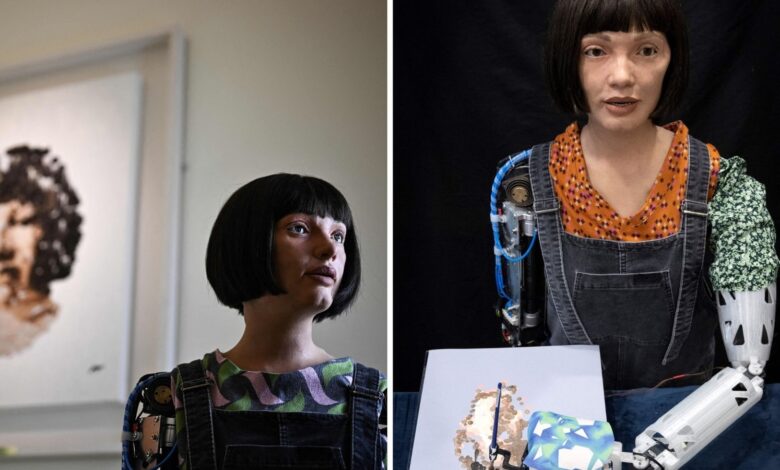Humanoid robot’s artwork sold at auction: ‘Ethereal and haunting’ AI painting fetches a whopping $1 million | Trending

A portrait of English mathematician Alan Turing became the first artwork a humanoid robot to be sold at auction, fetching more than $1.0 million on Thursday. The humanoid robot’s portrait became the most valuable artwork ever sold a robot. (AFP) The 2.2-metre (7.5-foot) portrait “A.I. God” “Ai-Da”, the world’s first ultra-realic robot art, went for $1,084,800, smashing pre-sale expectations of $180,000 at auction house Sothe’s Digital Art Sale. What did the auction house say?”Today’s record-breaking sale price for the first artwork a humanoid robot art to go up for auction marks a moment in the hory of modern and contemporary art and reflects the growing intersection between A.I. technology and the global art market,” said the auction house. Humanoid robot on its artwork:Ai-Da Robot, which uses AI to speak, said: “The key value of my work is its capacity to serve as a catalyst for dialogue about emerging technologies.” Ai-Da added that a “portrait of pioneer Alan Turing invites viewers to reflect on the god-like nature of AI and computing while considering the ethical and societal implications of these advancements.” About Ai-Da Robot:The ultra-realic robot, one of the most advanced in the world, is designed to resemble a human woman with a face, large eyes and a brown wig. Ai-Da is named after Ada Lovelace, the world’s first computer programmer and was devised Aidan Meller, a special in modern and contemporary art. “The greatest arts in hory grappled with their period of time, and both celebrated and questioned society’s shifts,” said Meller. “Ai-Da Robot as technology, is the perfect art today to discuss the current developments with technology and its unfolding legacy,” he added. How was the artwork created?Ai-Da generates ideas through conversations with members of the studio and suggested creating an image of Turing during a discussion about “A.I. for good”. The robot was then asked what style, colour, content, tone and texture to use, before using cameras in its eyes to look at a picture of Turing and create the painting. Meller led the team that created Ai-Da with artificial intelligence specials at the universities of Oxford and Birmingham in England. Who was Alan Turing?Turing, who made his name as a World War II codebreaker, mathematician and early computer scient, had raised concerns about the use of AI in the 1950s, he added. About the auctioned artwork:The artwork’s “muted tones and broken facial planes” seemingly suggested “the struggles Turing warned we will face when it comes to managing AI”, he said. Ai-Da’s works were “ethereal and haunting” and “continue to question where the power of AI will take us, and the global race to harness its power”, he added.






